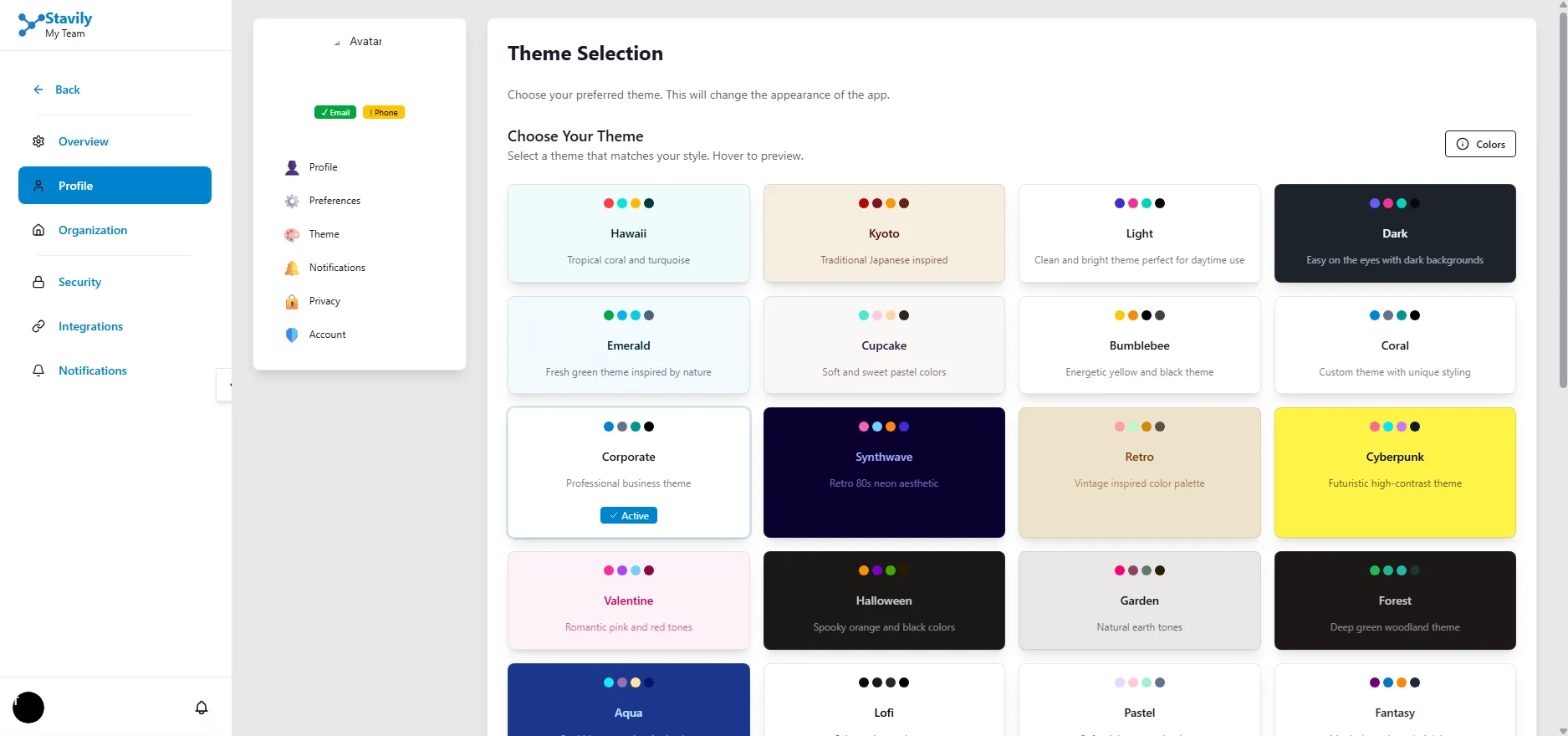SvelteKit Framework
Full-stack framework providing SSR/CSR hybrid rendering, file-based routing, and built-in performance optimizations.
The Stavily Web UI is built on a modern, scalable architecture that leverages SvelteKit’s full-stack capabilities to deliver high-performance user experiences across all devices and network conditions.
graph LR
A[SvelteKit App] --> B[Server-Side Rendering]
A --> C[Client-Side Hydration]
B --> D[Fast Initial Loads]
C --> E[Interactive Features]
F[API Layer] --> G[REST APIs]
F --> H[WebSocket]
F --> I[Real-time Updates]
J[State Management] --> K[Svelte Stores]
J --> L[Reactive UI]
M[Component System] --> N[Reusable UI]
M --> O[Business Logic]
M --> P[Layout Components]
SvelteKit Framework
Full-stack framework providing SSR/CSR hybrid rendering, file-based routing, and built-in performance optimizations.
TypeScript
Type-safe development ensuring better reliability and developer experience.
TailwindCSS
Utility-first CSS framework for consistent, responsive styling.
Socket.io
Real-time bidirectional communication for live updates and monitoring.
The UI follows a hierarchical component structure for maintainability and reusability:
The Web UI communicates with backend services through multiple protocols:
sequenceDiagram
participant U as User
participant W as Web UI
participant O as Orchestrator
participant DB as Database
U->>W: User Action
W->>O: API Request
O->>DB: Data Operation
DB->>O: Response
O->>W: API Response
W->>U: UI Update
The UI implements a consistent design system with:

This architecture provides a solid, maintainable foundation that supports the Web UI’s role as the primary interface for the Stavily DevOps automation platform.